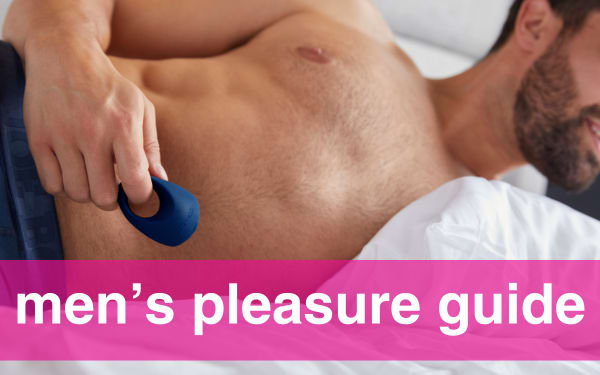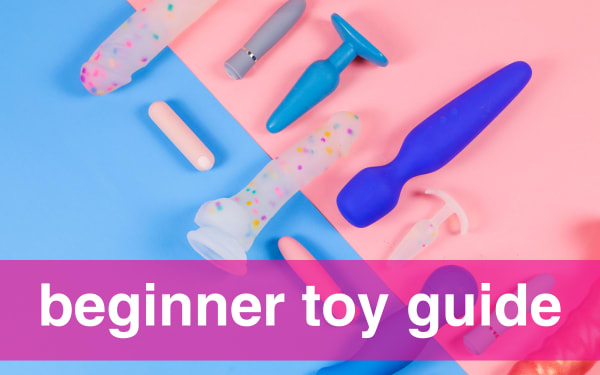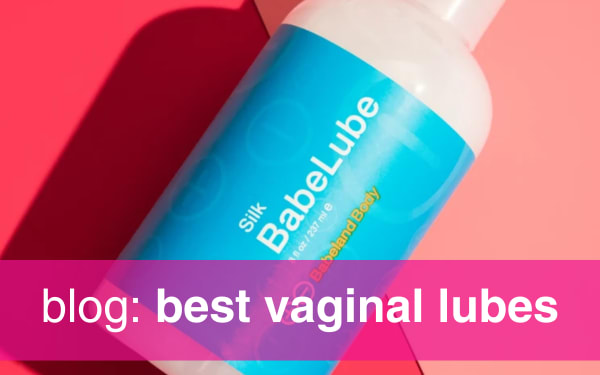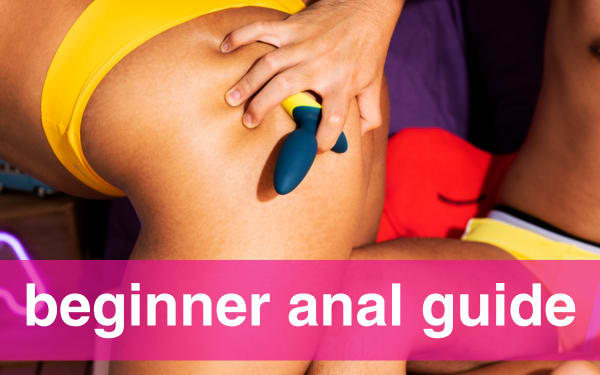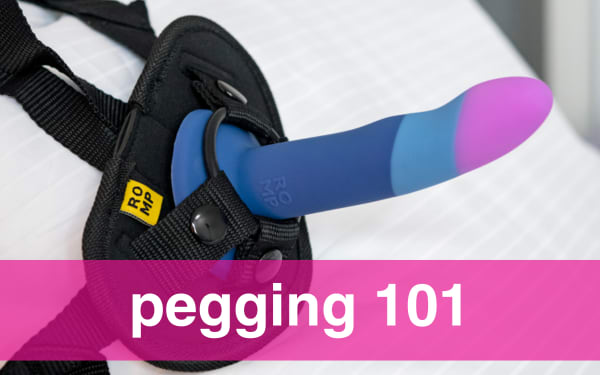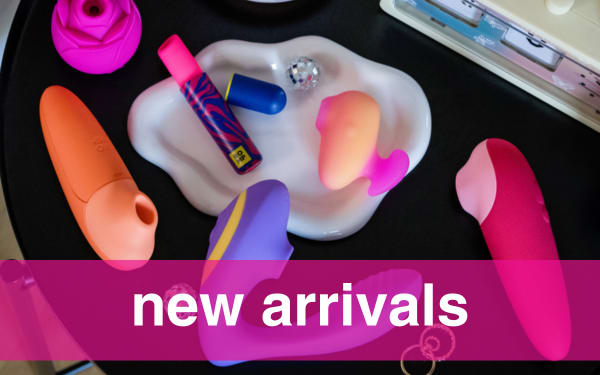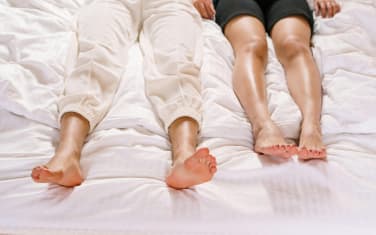Endometriosis and Sex: Finding Pleasure with Endo
As someone with endometriosis who prioritizes pleasure, I’ve come to notice that a lot of the ways that we talk and think about sex tends to leave out the complications that come with conditions that affect the ways that we experience pleasure, particularly when it comes to discomfort and pain during penetration.
It’s estimated that one in 10 people who menstruate / have uteruses are affected by endometriosis - that’s roughly 190 million people globally, though the number may be higher due to the common misdiagnosing of this condition as “just being bad cramps.” (Which is why it’s so important to advocate for yourself next time you have a physical exam or gyno appointment!)
So, let’s talk about it.
What is endometriosis?
Endometriosis (aka endo) is a medical condition in which tissue similar to endometrium – cells that normally line the inside of the uterus – grow / form outside of the uterus. Endo most commonly affects ovaries, fallopian tubes, and other tissue lining and surrounding the pelvis, though some cases may even have endometrial-like tissue forming beyond the pelvic area.
With endometriosis, the tissue that forms outside of the uterus still acts as normal endometrial tissue would – thickening and bleeding with the menstrual cycle – but because it cannot exit the body like tissue in the uterus can, it can become trapped. This can cause painful symptoms like development of cysts (endometriomas), irritate tissue, develop scar tissue, and create adhesions of fibrous tissue between pelvic organs – and can even cause the vaginal walls to cling to the rectum.
 Endometriosis and sex
Endometriosis and sex
Two of the most common symptoms experienced by folks with endo are extreme cramps / abdominal pain, and dyspareunia – aka pain during intercourse - which is why endometriosis can (and often will) affect the sex life of someone who has it.
With endometriosis, it can also be harder for the vaginal canal to expand comfortably during penetrative sex, which can be a big contributor to discomfort and/or pain. Even for non-penetrative sex, pressure against the abdomen or simply having too much pelvic movement (especially during a flare up or while on a menstrual cycle) can still cause tenderness or aches during sexual activity.
Other factors like chronic fatigue, muscle aches, cramps, and other symptoms may also play a role in how we experience sex with endo.
Reducing pain during sex with endometriosis
Not all cases of endometriosis are on the same level or are experienced in the same way. While these tips are here to help mitigate discomfort during sex, they are not medical advice and may not work for everyone. Always listen to your body, and talk to your doctor / OBGYN about your particular symptoms and concerns.
Lubrication
If there’s something to suggest to anyone wanting to have more comfortable sex, it’s using lube – but especially for those who are experiencing pain with penetration. Some folks with endo experience vaginal dryness / produce less natural lubrication (regardless of how aroused they may be), and so you’ll want to use lots of lubricant.
Lubricant can help hydrate the vaginal walls to help with sensations of tightness, cut down on friction, and create a pleasurable slickness and glide. Don’t be afraid to really lube up, and reapply as much as you’d like or need.
- Silicone-based lubes will be great for long-lasting slickness with less re-application
- Water-based lubricants are the right choice for use with toys and for folks with super-sensitive skin
- Aloe-based lubes help to moisturize the body as well as lubricate it.
Check out our guide to vaginal lubricants to find the right pick for your needs.
 Experiment with new sex positions
Experiment with new sex positions
How our bodies are angled can have a very strong effect on how we experience sensations – the angle of our pelvis, the tilt of our uterus, how much pressure is against our abdomen, whether the position causes more pressure against the vaginal walls or the cervix, and how deep penetration can go. Because endometrial-like tissue can form in different places on different bodies, experimenting with different positions and going slow to see which work for you is going to be key.
Sexual positions where the receiver can control depth and pace - like doggy style - can be a great option. You can even incorporate sex furniture or sex positioning pillows to help maintain a comfortable angle once you find it – the wedge pillow is great for helping to elevate the hips without needing to engage the core, taking more tension off of those muscles.
Plus, it can be a lot of fun to try out new ways to move your bodies – try using a game or positioning dice to get inspired.
Prioritize other healthy lifestyle changes
Our physical health has a direct impact on our sex lives, especially when we have a chronic condition like endo. Making sure that we take care of our physical self can help us not only in keeping our bodies in better shape for sexual activity, but to understand our connection to certain lifestyles and how they affect our well-being.
A healthy diet (I’m talking nutrients, not restrictive dieting) can help us to stay regular. If we’re bloated or constipated, the pressure from our full bowels can press on and stretch nodules and scar tissue caused by endometriosis, making our entire stomach and pelvic area more tender and increase the likelihood of pain with penetration.
Staying hydrated can help to keep our bodies working their best, and can reduce bloating which can also cause discomfort and pain when paired with endo symptoms. Limiting things like caffeine and alcohol can help our bodies stay better hydrated, and can help reduce the impact of endo symptoms that can be triggered by these.
Of course, you know your body better than anyone else, so keeping track of what makes you feel better (and what doesn’t) is up to you - listen to what your body is telling you!
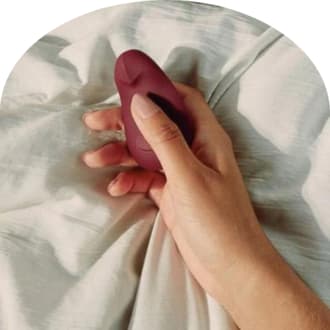 Exploring non-penetrative play
Exploring non-penetrative play
Sex doesn’t always need to involve penetration – there are so many ways to explore pleasure across the body.
Masturbation / mutual masturbation
Explore some tandem touch, focusing on external hot-spots like the clit and penis. Anyone who thinks that hand play and handjobs are passé probably just needs a hands-on reminder.
Check out our guide to Mutual Masturbation here.
Ride and grind
Take that touch hip-to-hip and explore some outercourse. Tribbing, scissoring, dry-humping – can be just as pleasurable and intimate, and allow you to explore new positions just like with penetrative play. If you’re riding solo, there are plenty of toys to explore, like the ergonomically shaped VibePad, or a humpable hand-held like the Dame Pom.
Check out our guide to outercourse here.
Get kinky
BDSM is a great way to get sensual – and you don’t need to involve the genitals at all, which is especially great for folks with vulvodynia (pain on the external vulva and surrounding the vaginal canal). From soft and seductive to rough and kinky, playing with bondage, power play, impact play, sensation play, and more can allow you to discover erogenous zones all across the body.
Check out our guide to BDSM here.
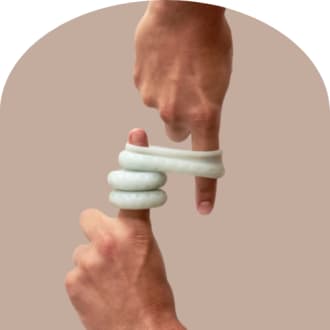 Toys and tools for sex with endometriosis
Toys and tools for sex with endometriosis
Bringing gear into the bedroom can be both fun and useful – we mentioned lube and positioning pillows as game-changers, here are some other faves:
Buffer Rings
When Emily Sauer started talking about her experience with painful sex, she was surprised to find out the sheer number of folks coming out to tell her that they “had this problem, too.” So, the OhNut was born.
The OhNut is a series of stackable rings designed to help control the depth of penetration. For some, deep thrusts can cause particular discomfort or pain for the area surrounding the cervix, which can be extra sensitive for folks with endo. Limiting the depth of insertion can help prevent this, which is where OhNut comes in.
You can customize the amount of buffer you create by adding or removing rings, and the soft and stretchy FDA-approved polymer is designed with both partners in mind, maximizing comfort without minimizing pleasure.
Thicker cock rings can also work as a buffer as well, wearing it in front of the balls on the shaft to create that barrier from too-deep penetration.
Dilators
Dilators, sometimes called vaginal trainers, are a set of graduated sizes of insertable toys designed to help slowly introduce the body to accommodating width and depth to promote vaginal elasticity and reduce discomfort with penetration. For some, regular dilator use can help to gently stretch and soften scar tissue that may develop with endo- make sure that you always use lots and lots of lube.
If you’ve never used dilators before, it’s a good idea to have a pelvic exam first and consult with a doctor or OBGYN for recommendations on use that are specific to your body and needs.
Here are lots of different types of dilators:
- Silicone dilators are lightweight and can offer a variety of densities from soft to firm.
- Glass dilators are super-smooth for easy insertion and can be used with any lube.
- Vibrating dilators add sensation as well as providing some massage-like stimulation and extra arousal to help relax the muscles.
Remember, endo sex can be incredible sex. It’s so important for us to listen to our bodies, and to treat them well. Explore what makes you feel good, communicate with your partner(s), and allow yourself to prioritize your pleasure – you deserve it.


